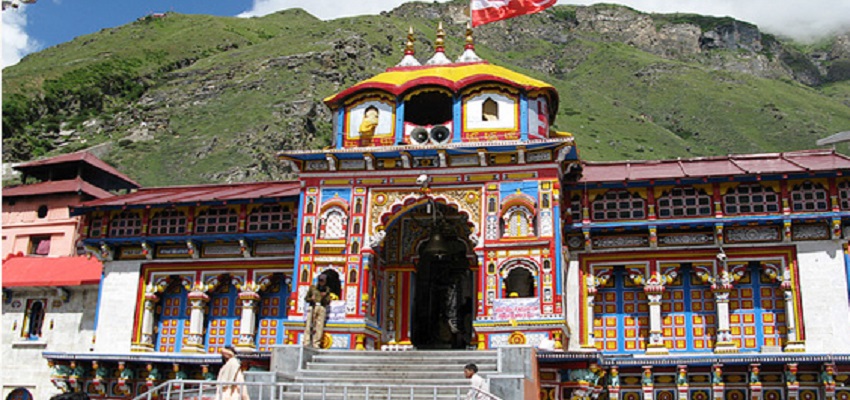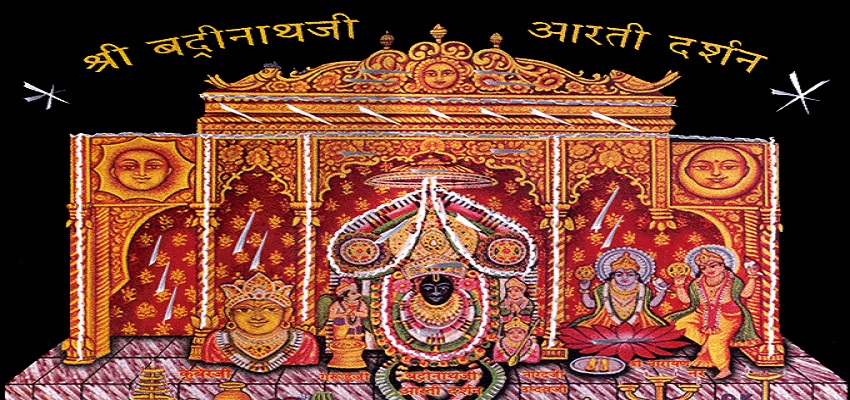Overview Trip Highlights Itinerary Price Inclusions
Char Dham Yatra From Haridwar Starting from Only @14800/- p.p
Overview
Chardham Yatra in Uttarakhand is one of the most popular pilgrimage (or tirth yatra) in Hinduism. Devotees aspire to visit this holy char dham pilgrimage once in a life time. This 12 days Chardham Yatra package begins from Delhi and will take you to the holy shrines via Rishikesh yet another holy city in India.Chardham Yatra Ex Haridwar.
This pilgrimage tour package covers trek to Yamunotri followed by Gangotri, Kedarnath and Badrinath. Besides the blessing of the almighty, pilgrims enjoy the mesmerizing beauty of nature and the spiritual ambience of Himalayas covered by snow, the melodious chirping of birds & the scatter thick green forests.
Note: This is just a suggested itinerary indicative of what could be possible. We tailor holidays for your specific needs. Contact us if you want modifications so that we could tailor a holiday to suit your need for an unforgettable India tour & also for Chardham Yatra Ex Haridwar.
Trip Highlights
- Attend the mesmerizing evening Aarti in Rishikesh.
- Darshan and at Yamunotri temple.
- Darshan and Poja at Kedarnath temple.
- Darshan and Pooja at at Badrinath temple.
Itinerary Details
CHARDHAM YATRA EX HARIDWAR
Day 1/Night 01 : Haridwar – Barkot (210kms/7-8hr)
- Barkot via Mussoorie, enroute visit Mussoorie Lake & Kempty Fall in Mussoorie.
- Later drive straight to Barkot. Check into the hotel arrival in Barkot.
- Overnight stay at Barkot.
- Barkot Weather – Generally pleasant in summer, the temperature ranges from 25-30 degree Celsius, Winter: The Days are pleasantly cool but the nights are cold,temp ranges from 10 deg to 05 deg
Day 2/Night 02: Barkot – Yamunotri – Barkot {36kms drive & 6kms Trek (one side)
- Early morning after breakfast (packed breakfast), drive to Jankichatti / Phoolchatti & star trek from here to Yamunotri (6kms) (Either by walk or by horse or by Doli at own cost).
- After taking bath in Jamunabai Kund’s warm water and having “Darshan” of “Yamunaji” return to Jankichatti by trek. Later drive towards Barkot
- Overnight stay at Barkot.Yamunotri Temple: Maharani Gularia of Jaipur built the temple in the 19th Century. It was destroyed twice in the present century and rebuilt again. At Yamunotri, One can cook rice by packing it in a cloth and dipping it in the hot water of the Tapt kund. Pilgrims take this cooked rice home as “Prasad”. Here near the temple “Pooja” can be offered to Divya Shila.Surya Kund: There are a Number of thermal springs near temple, which flows into numerous pools. The most important of these is Surya Kund.Divya Shila: A rock pillar, worshipped before entering the Yamunotri Temple.
Yamunotri Weather – In summer the maximun temp is 18 degrees and the minimum is 10 degrees celsius. The days are pleasantly cool but the nights are cold.
Day 3/Night 03:Barkot – Uttarkashi (100kms/4hr) (165kms/5-6hr)
- Morning after breakfast, drive to Uttarkashi.
- Check into the hotel arrival in Uttarkashi.
- Visit Kashi Vishwanath Temple in Uttarkashi.
- Overnight stay at Uttarkashi. Uttarkashi: Uttarkashi is home to a number of ashrams, temples. The name of the town reflects its similarity to and location (as north of) the city of Kashi (Varanasi). Similar to Varanasi, town of Uttarkashi is also situated on the banks of River Ganga.Vishwanath temple – Vishwanath temple is one of the oldest Shiva temples in Northern India. Re-constructed in 1857 by Maharani Khaneti Devi of Tehri State in the ancient architectural style. It is situated at the heart of the town. A massive iron trident, symbolic of divine mother’s, is erected and worshiped from time immemorial at the temple complex. Ganeshji, Sakshi Gopal, Markandeya Rishi’s small shrines are also part of the temple complex. Akhand Jyoti as well as Akhand Abhishek, special aarti at morning and evening are offered. As per Skunda Puran, Uttarkashi is known as ‘Saumya Varanasi’, the abode of Lord Shiva in Kaliyug and counted as one of the twelve Jyotirlingas.Shakti temple – Right in front of the Vishwanath temple is Shakti temple. It has a big ‘Trishul’ of about 6 meters in height and a circumference of 90 cms. at bottom. Though there are different views about the making of this, the upper part of it seems to be made up of iron and the lower one is of copper. As per the epics this Shakti was thrown on the devils by the Goddess Durga(Shakti), hence it gets its name. Since then this Shakti is erected over here.
Uttarkashi Weather – Generally hot in summer, the temperature ranges from 30-35 degree Celsius but nights is pleasant, Cold in winters.
Day 04/Night 04:Uttarkashi – Gangotri – Uttarkashi (100kms/3-4 hrs. each side)
- Early morning (packed breakfast) drive to Gangotri, enroute at Gangnani take a holy dip in Garam Kund, further drive to Gangotri via beautiful Harsil Valley.
- Harsil is famous for its nature beauty and for the majestic views of the Deodar trees and mountains. On arrival at Shree Gangotri, take a holy dip in the sacred river Ganges which is also called Bhagirathi at its origin. Perform Pooja and Darshan, after that relax for some time in the lovely surroundings.
- Later drive back to Uttarkashi.
- Overnight stay at Uttarkashi.
Gangotri Temple: The temple was constructed by the Gorkha General Amar Singh Thapa in the 18th Century, is situated on the right bank of Bhagirathi.
Gangotri Weather – The maximum temperature during summer can go up to 20° Celsius. Summer nights can get cooler with a minimum temperature of 10° Celsius. Light woolen clothes are required while visiting Gangotri during summer. Winter season is very chilly in Gangotri. Gangotri will be covered in sheets of snow during winter. Pilgrim centers remains closed throughout winter due to heavy snow falls.
Day 05/Night 05:Uttarkashi – Guptkashi (220kms/8-9hr)
- Morning after breakfast, drive to Guptkashi via Moolgarh & Lambgoan. Enroute you can see the beautiful river Mandakini at Tilwara.
- The Mandakini river comes from Kedarnath, drive alongside the river to reach Guptakashi, visit Ardh Narishwar Temple in Guptakashi.
- Check into the hotel arrival in Guptakashi.
- Overnight stay at Guptakashi.Guptakashi:– The name Gupt Kashi means “Hidden Benares. Mythology describes how when the Pandava brothers were searching for a glimpse of Shiva, Shivji first concealed himself at Guptkashi, but later fled from them further up the valley to Kedarnath, where the Pandavas finally got their wish fulfilled. There are more tangible connections as well-the Kedarnath pandas (priests) live in Guptkashi during the winter months, and after the Kedarnath temple closes for the winter, the image of Kedarnath passes through Gupt Kashi on its way to Ukhimath (across the valley), where it stays for the winter.Guptkashi Weather – pleasant in summer, the temperature ranges from 25-30 degree Celsius. Cold in winters
Day 06/Night 06:Guptkashi – Kedarnath – (30kms by road & 19kms Trek one way)
- Morning after breakfast drive to Gaurikund, start your trek from Gaurikund to Kedarnath (by Pony / Doli / Helicopter at your own cost). Visit Kedarnath Temple. After temple Darshan trek down to Gaurikund. Later, drive to Guptkashi.
- Overnight stay at Guptakashi.
Kedarnath: The Kedarnath shrine, one of the 12 jyotirlingas of Lord Shiva, is a scenic spot situated, against the backdrop of the majestic Kedarnath range. Kedar is another name of Lord Shiva. According to legend, the Pandavas after having won over the Kaurava in the Kurukshetra war, felt guilty of having killed their own brothers and sought the blessings of Lord Shiva for redemption. He eluded them repeatedly and while fleeing took refuge at Kedarnath in the form of a bull. On being followed he dived into the ground, leaving his hump on the surface. The remaining portions of Lord Shiva appeared at four other places and are worshipped there as his manifestations. The arms appeared at Tungnath, the face at Rudranath, the belly at Madhmaheshwar and his locks (hair) with head at Kalpeshwar. Kedarnath and the four above-mentioned shrines are treated as Panch Kedar.
Kedarnath Weather – Due to its high altitude the weather in Kedarnath remains cold for most part of the year. Summer here is cool and pleasant while winter is severe. During summer season the temperature varies around 20°Celsius. Light woolen wear is recommended. Winter season in Kedarnath is severe with mercury falling to as low as 0°Celsius. During this time the place experiences snowfall as well. Due to the extreme climatic conditions, this time is usually avoided by tourists
Day 07/Night 07:Kedarnath – Guptkashi (30kms by road & 19kms Trek one way)
- It is extra day for you (whoever is using helicopter services because weather in kedarnath ji is unpredictable ,so to complete you darshan/Yatra we always advise to keep extra days in your hand )
Day 08/Night 08:Guptkashi – Badrinath (160kms/7hr)
- Morning after breakfast, drive to Badrinath. Check in to the hotel arrival in Badrinath. Pilgrims after having a bath in the Taptkund have the Darshan of Badrivishal & Aarti in evening.
- Brahamakapal is significant for Pinddan Shraddh of ancestors (Pitrus). There are other interesting sightseeing spot like Mana, Vyas Gufa, Maatamoorti, Charanpaduka, Bhimkund and the “Mukh” of the Saraswati River. Just within the three kms of Badrinathjee.
- Overnight stay at Badrinath.
Badrinath one of the ‘Ancient Four Dhams’ is one of the most celebrated pilgrimage spots of the country and is situated at an elevation of 3,133 meters, guarded on either side by the two mountain ranges known as Nar & Narayan with the towering Neelkanth Peak providing a splendid backdrop. This revered spot was once carpeted with wild berries. Thus the place got the name “Badri van”, meaning “forest of berries”.
Tapt Kund : Natural thermal springs on the bank of the river Alaknanda, where it is customary to bath before entering the Badrinath temple.
Mana Village : Inhabited by an Indo-Mongolian tribe, it is the last Indian village before Tibet.
Vasundhara : As the name suggests, vasundhara is a magnificent water fall. This place is 5 kms. from Badrinath out of which 2 kms. is motorable upto Mana.
Bhim Pul : On the other side of Mana village, a massive rock forming a natural bridge, lies over the roaring Saraswati river. It presents a spectacular view of water thundering down through the narrow passage under the rock and is believed to have been placed there by Bhim, the second eldest among the five Pandava brothers.
Vyas Gufa (cave): Near Mana Village, this is a rock-cave where Ved Vyas is believed to have composed the Mahabharata and the pauranic commentaries.
Badrinath Weather: The average maximum temperature will be around 18° Celsius and the average minimum is 8° Celsius. Warm and woolen clothes are hence required for a stay in Badrinath throughout the year. Winter in Badrinath is often accompanied by snow falls. Winter is very chilly with an average temperature of 5° Celsius. Due to the extreme climatic conditions, this time is usually closed for tourists.
Day 09/Night 09:Badrinath – Joshimath – Rudraprayag (160kms/7hr)
- Morning after breakfast, driver for Rudraprayag via Joshimath.
- Visit on the way Narsingh Temple in Joshimath later drive back to Rudraprayag via Joshimath.
- Check into the hotel arrival in Rudraprayag.
- Overnight stay at Rudraprayag.Joshimath is situated on the slopes above the confluence of the rivers
Alaknanda and Dhauliganga. Of the four ‘Maths’ established by Adi Shankaracharya, Joshimath is the winter seat of Badrinath. The idol is brought down to Joshimath and installed in the temple for people to worship. There are many other temples in the township. The most important is the temple of Nir Singh with the idol of Lord Vishnu. The left arm of this deity is getting destroyed with time and the popular belief holds that the day the arm completely withers Badrinath valley will cease to exist and the Gods will transfer the residence into the neighboring Niti Valley at Bhavishya Badri.
Rudraprayag is one of the Panch Prayag (five confluences) of Alaknanda River. It is confluence of rivers Alaknanda and Mandakini. Kedarnath, a Hindu holy town is located 86 km from Rudraprayag.
Rudraprayag Weather – Generally hot in summer, the temperature ranges from 35-40 degree Celsius, Winter: The Days are pleasantly cool but the nights are cold, temp ranges from 20 deg to 05 deg.
Day 10 Rudraprayag – Haridwar (165kms/5-6hr)
- Morning after breakfast, drive for Haridwar via Rishikesh.
- Rishikesh ‘place of sages’ is a celebrated spiritual town on the bank of Ganga and is surrounded by Shivalik range of the Himalayas on three sides. It is said that when Raibhya Rishi did hard penances, God appeared by the name of ” Hrishikesh ” and this area hence firth came to be known as Rishikesh.
- Check in Hotel.
- Later visit Rishikesh Temples & Sight Seeing – Laxman Jhulla, Ram Jhulla.
- Latter Drop at Haridwar & with this your trip comes to end with sweet memoires of your trip with India best tour travel company # OSR Vacation (P) Ltd
Rishikesh: Named after the Lord Vishnu, Rishikesh is a holy city for Hindus. Located in the foothills of the Himalaya in northern India it is also known as the yoga center of the world and is home to many world renowned ashrams. Rishikesh styles itself as the ‘Yoga Capital of the World’, with masses of ashrams and all kinds of yoga and meditation classes. The fast-flowing Ganges is surrounded by forested hills inside the city. Apart from temples and ashrams Rishikesh is now a popular white-water rafting centre, backpacker hang-out, and gateway to treks in the Himalaya.
With All Blessings & Fun Take Your Home a Wonderfull Mesmerizing Memories Of Chardham Yatra Ex Haridwar.
Inclusions
- Hotel accommodation as per package same or similar hotels.
- Breakfast.
- Trnsfers and sightseeing as prepackage car.
- All toll tax, parking, fuel and driver allowances.
- All applicable hotel and transport taxes.
Exclusion
- GST as Applicable.
- Lunch does not include in Package.
- Anything not mentioned under ‘Package Inclusions’.
- All personal expenses, optional tours and extra meals.
- Medical and travel insurance.
- Any kind of entry fees anywhere if not mentioned in including.
- Tips, travel insurance, medical insurance, laundry charges, liquors, mineral water, telephone charges.
- All items of personal nature.
- Porter, pony, horse, cable car, boat, train tickets, air tickets charges.
- Helicopter Ticket INR 8,500/- per person (As per UttarakhandGoverment).
- VIP Ticket for Kedarnath Darshan
CHAR DHAM YATRA EX HARIDWAR—Cost/Person
| PACKAGE & VEHICLE | NO. OF PAX | STANDARD | ||
| Char Dham Yatra (Indigo) | 04 PAX | Rs 18200/Person | ||
| Char Dham Yatra (Innova/Tavera/Xylo) | 06 PAX | Rs 17600 /Person | ||
| Char Dham Yatra (Tempo Traveler) | 12 PAX | Rs 15800 /Person | ||
| Char Dham Yatra (Tempo Traveler) 15 Seater | 15 PAX | Rs 14800 /Person |












